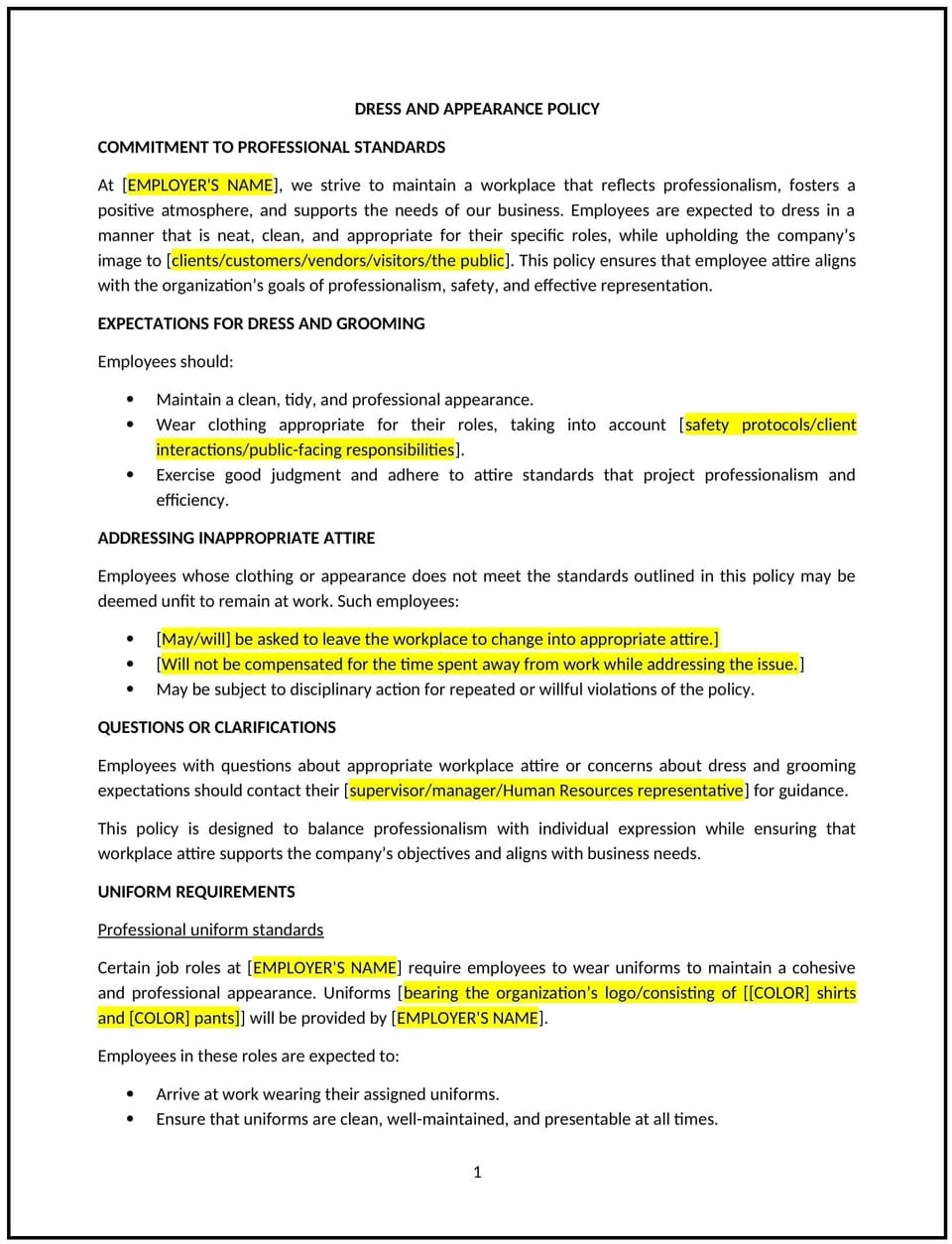Dress and appearance policy (Rhode Island): Free template

Dress and appearance policy (Rhode Island)
This dress and appearance policy is designed to help Rhode Island businesses establish guidelines for employee attire and grooming. It outlines expectations for professional appearance, safety requirements, and exceptions.
By adopting this policy, businesses can maintain a professional workplace, ensure safety, and align with industry standards.
How to use this dress and appearance policy (Rhode Island)
- Define dress code: Specify acceptable attire, such as business casual, uniforms, or safety gear.
- Address grooming standards: Outline expectations for personal hygiene and grooming.
- Include safety requirements: Specify attire that ensures safety in certain roles, such as closed-toe shoes or protective clothing.
- Set exceptions: Describe any exceptions to the dress code, such as casual Fridays or religious accommodations.
- Train employees: Educate staff on the policy and its importance.
- Review and update: Assess the policy annually to ensure it aligns with evolving business needs and industry standards.
Benefits of using this dress and appearance policy (Rhode Island)
This policy offers several advantages for Rhode Island businesses:
- Maintains professionalism: Ensures employees present a professional image to clients and stakeholders.
- Ensures safety: Provides guidelines for attire that minimizes workplace hazards.
- Enhances brand image: Reflects the business’s values and standards through employee appearance.
- Reduces conflicts: Sets clear expectations to avoid misunderstandings about appropriate attire.
- Aligns with best practices: Supports adherence to industry and workplace standards.
Tips for using this dress and appearance policy (Rhode Island)
- Communicate the policy: Share the policy with employees and include it in the employee handbook.
- Provide training: Educate managers on enforcing the policy and addressing violations.
- Monitor compliance: Regularly review employee attire to ensure adherence to the policy.
- Address issues promptly: Take corrective action if employees violate the dress code.
- Update regularly: Assess the policy annually to ensure it aligns with evolving business needs and industry standards.
Q: How does this policy benefit businesses?
A: By adopting this policy, businesses can maintain professionalism, ensure safety, and enhance brand image.
Q: What types of attire are acceptable under this policy?
A: The policy specifies acceptable attire, such as business casual, uniforms, or safety gear.
Q: Are there exceptions to the dress code?
A: Yes, exceptions may include casual Fridays, religious accommodations, or medical needs.
Q: How should businesses handle dress code violations?
A: Businesses should address violations through their disciplinary policy and ensure proper documentation.
Q: How often should businesses review this policy?
A: Businesses should review the policy annually or as needed to ensure it aligns with evolving business needs and industry standards.
This article contains general legal information and does not contain legal advice. Cobrief is not a law firm or a substitute for an attorney or law firm. The law is complex and changes often. For legal advice, please ask a lawyer.


